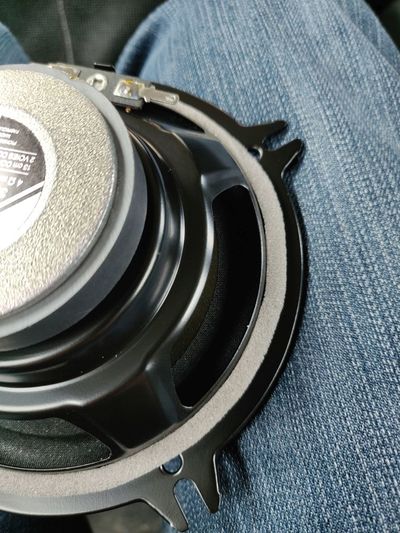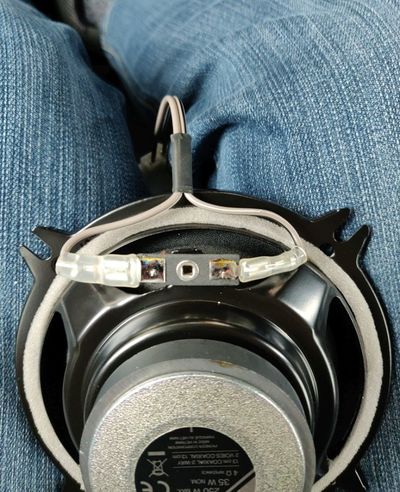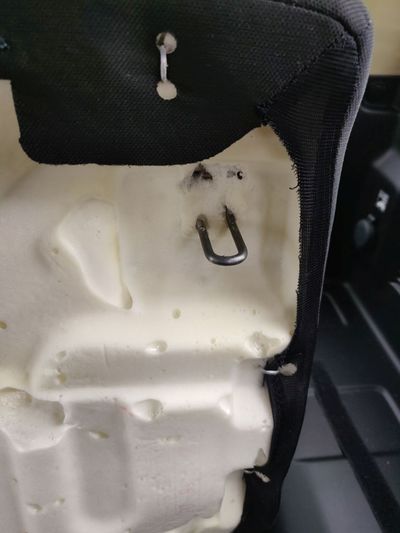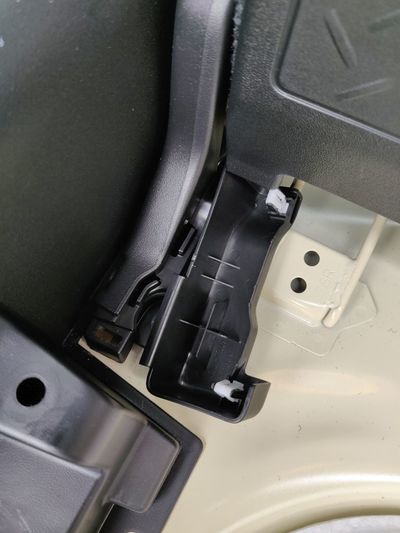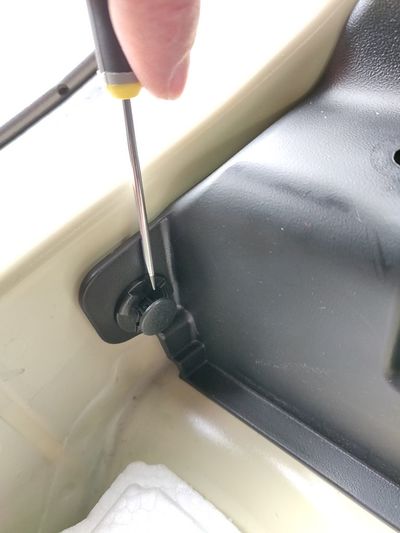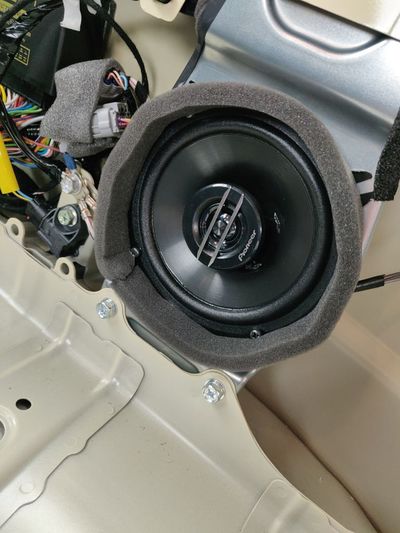![]() The content of any article might be expanded / improved in the future - revisit it sometimes.
The content of any article might be expanded / improved in the future - revisit it sometimes.
![]() Seen a mistake? Know something that isn't written? Edit and change this article yourself!
Seen a mistake? Know something that isn't written? Edit and change this article yourself!
![]() Some images in the article (if present) can be enlarged by clicking on them.
Some images in the article (if present) can be enlarged by clicking on them.
Contents
Introduction
The Gen4 (2018-) Jimny comes with two front speakers installed. No rear speakers are fitted, although the wiring necessary to connect them to the headunit is already in place (confirmed for SZ5, tbc for SZ4). This guide details how to install rear speakers using official Suzuki parts.
Parts
This guide assumes that the following parts are being used.
- 99197-77R10 - rear speaker bracket kit. (UK.EU parts 99197-77R00-000 and 990E0-78R32-050 - MUST BE PURCHASED TOGETHER)
- 99000-79BJ0-R00 - rear speaker kit (2 x Pioneer TS-G1320FZS - No UK/EU equivalent at present)
Tools needed
- Small flat head screwdriver
- 10mm Socket & driver/ratchet
- #2 Philips screwdriver
- Electrical tape
- Ruler or tape measure
- Scissors
- Suitable tool to pry plastic trim
Preparation
- Measure 65mm from the bullet connects on each speaker wiring harness and wrap a couple of turns of electrical tape at this point, this helps avoid any damage to the wiring once installed.
- Fit one strip of the supplied grey foam to the flat surface at the rear of each speaker, adjacent to the cone.
- Attach the wiring harness to each speaker.
- Fit foam padding strips to the speaker brackets, 15mm from the top of each bracket. On the passenger side (UK) of the car, only a single padding strip is needed (shown below). On the driver side a strip should be fitted to both sides of the bracket, to prevent chafing against the car wiring loom.
- Remove rear seat base. The cushion is held in place by two brackets that friction fit into sockets in the base of the car. Pull the leading edges of the cushion upwards firmly to disengage.
- Remove the rear storage box (if present) and carpet covering the jack and wheel brace.
Trim removal
The following steps are the same for both sides of the car, the photos below show trim on the passenger (UK) side unless otherwise stated.
- Remove the sill scuff plate by firmly lifting upwards, using levers if required to get purchase. It is held in place by multiple friction clips.
- In the boot, remove the trip pieces covering the back of the seat hinges by levering upwards carefully. The photo shows the trim after removal. The white parts are friction clips that hold it in place.
- Remove 5 push pins indicated from the rear of the side trim (photo shows driver's side - UK), by loosening the center pin with a small flathead screwdriver as shown, then removing the push pin.
- Remove the single friction fastener in the rear footwell, by levering with a suitable tool.
- Carefully pull the top of the side trim away from the car body, which is held in place by 5 friction plugs (white in image below).
- The side trim around the seatbelt has some lugs which lock into the upper trim, a firm pull is needed to release these.
- The leading edge of the side trim wraps around the bodywork in the door opening, carefully pull the trim forward and pull away from the car body.
- Before lifting the side trim out of the car, ensure that the 12V accessory socket (passenger side) has been disconnected.
Recommended additional works
While you are having the rear interior of the car dismantled in order to install the rear speakers, you might use the opportunity to perform some additional modifications along the way:
- Installation of sound insulation and vibration damping materials in the rear part of the cabin;
- This also improves the performance of rear speakers;
- Rust protection of the body cavities through the application of wax for example;
- Rear cabin lamp installation and wiring;
- Installation of wires for rear parking sensors, tow bar, rear reversing camera, concealed GPS tracking unit, 12 V DC charging outlet in the trunk, whatnot, etc.
Installation
- The speaker brackets fit behind the bodywork of the car, as shown below. Secure in place using supplied bolts and tighten with either 10mm socket or PH2 Philips screwdriver.
- The speaker wiring connector is taped to the loom as indicated below, remove the tape prior to installing the speakers. The speakers need to be oriented with the wiring harness facing towards the front of the car on the passenger side (UK) as shown and towards the rear of the car on the drivers side (UK).
- Secure the speakers using the self tapping screws provided. Ensure the screwdriver used is a good fit and be careful not to slip and damage the speaker cones.
- Connect the speaker harness to the car speaker wiring and tape the plug/socket back into position.
- When installing on the driver's side (UK), the speaker wiring should run behind the washer pipe and be taped to the wiring loom.
- Fit the adhesive black foam around the edge of the speaker, being careful not to touch the speaker cone and have the foam leaning slightly away from the center of the speaker, so that it does not cover the cone once the trim is reinstalled.
- Once both speakers have been installed, test them BEFORE replacing trim!
- Using scissors, cut away the insulation from behind the speaker grille in the side trim. Use the supplied double-sided tape to hold the remaining pieces of insulation in place.
- Refit trim in reverse order, remembering to reconnect the 12V accessory socket wiring on the passenger's side (UK).
- Repeat for other side of car.
- Replace all removed trim pieces, rear bench, boot carpet and storage box.
Page last edited on 11/07/2019 by user Bosanek



